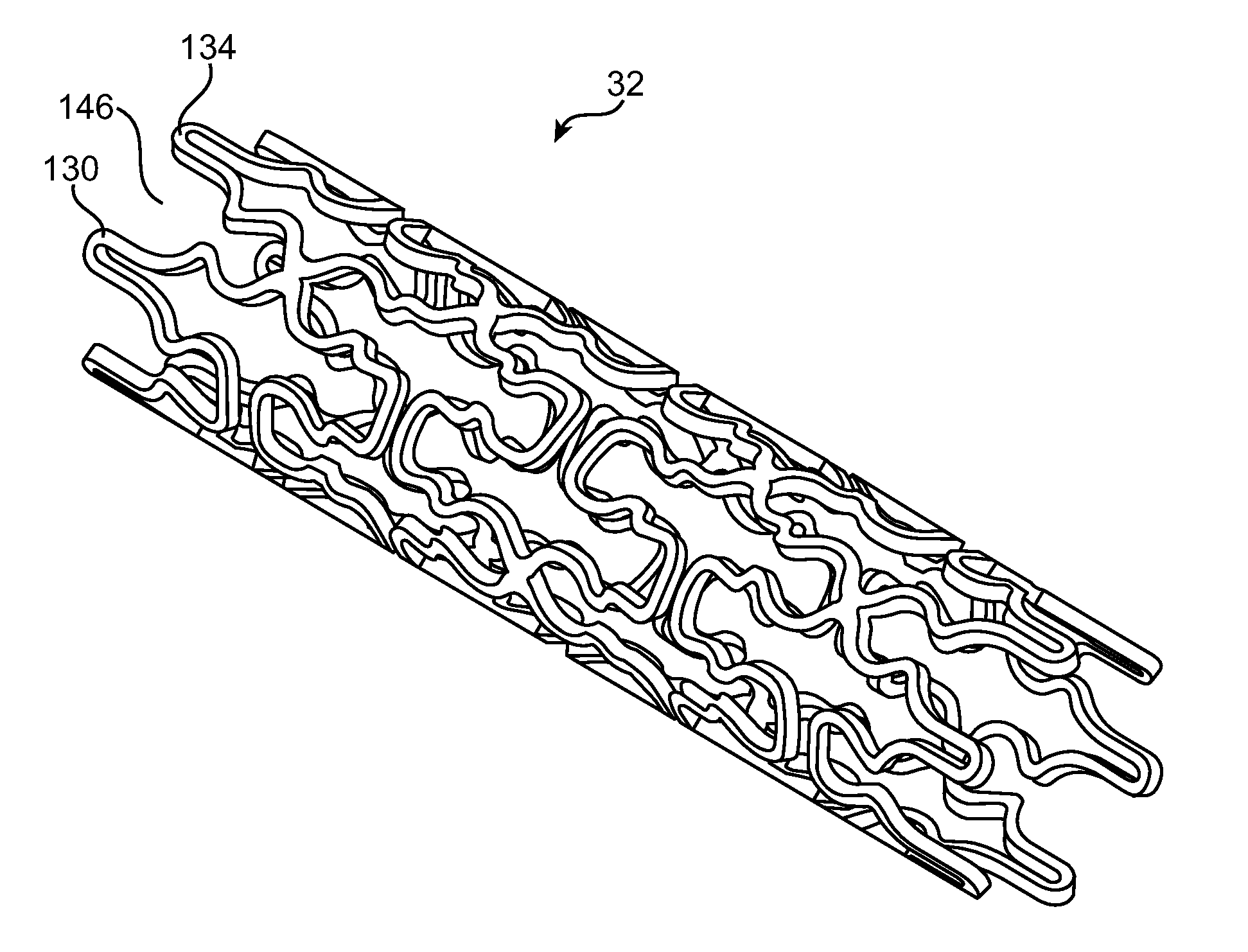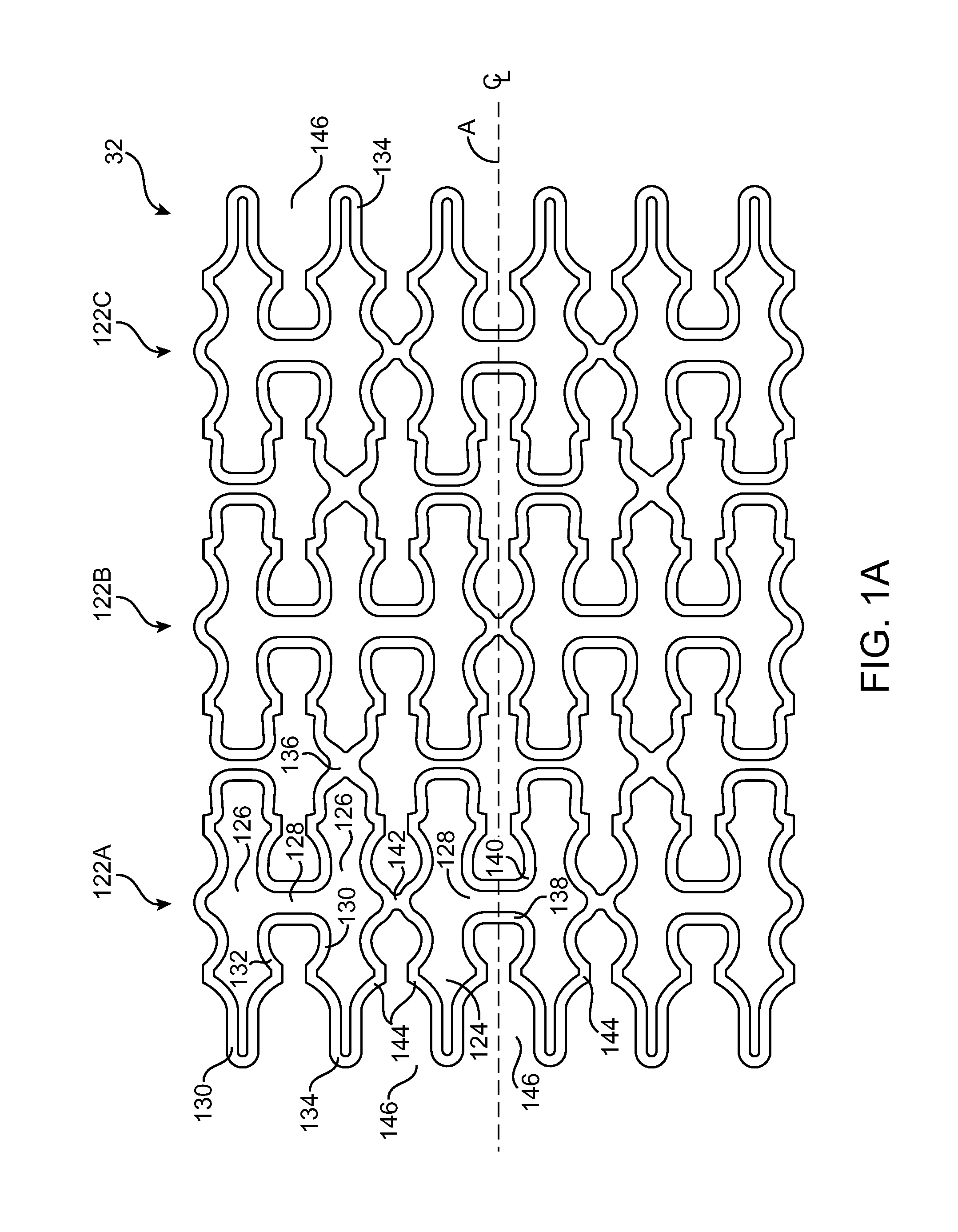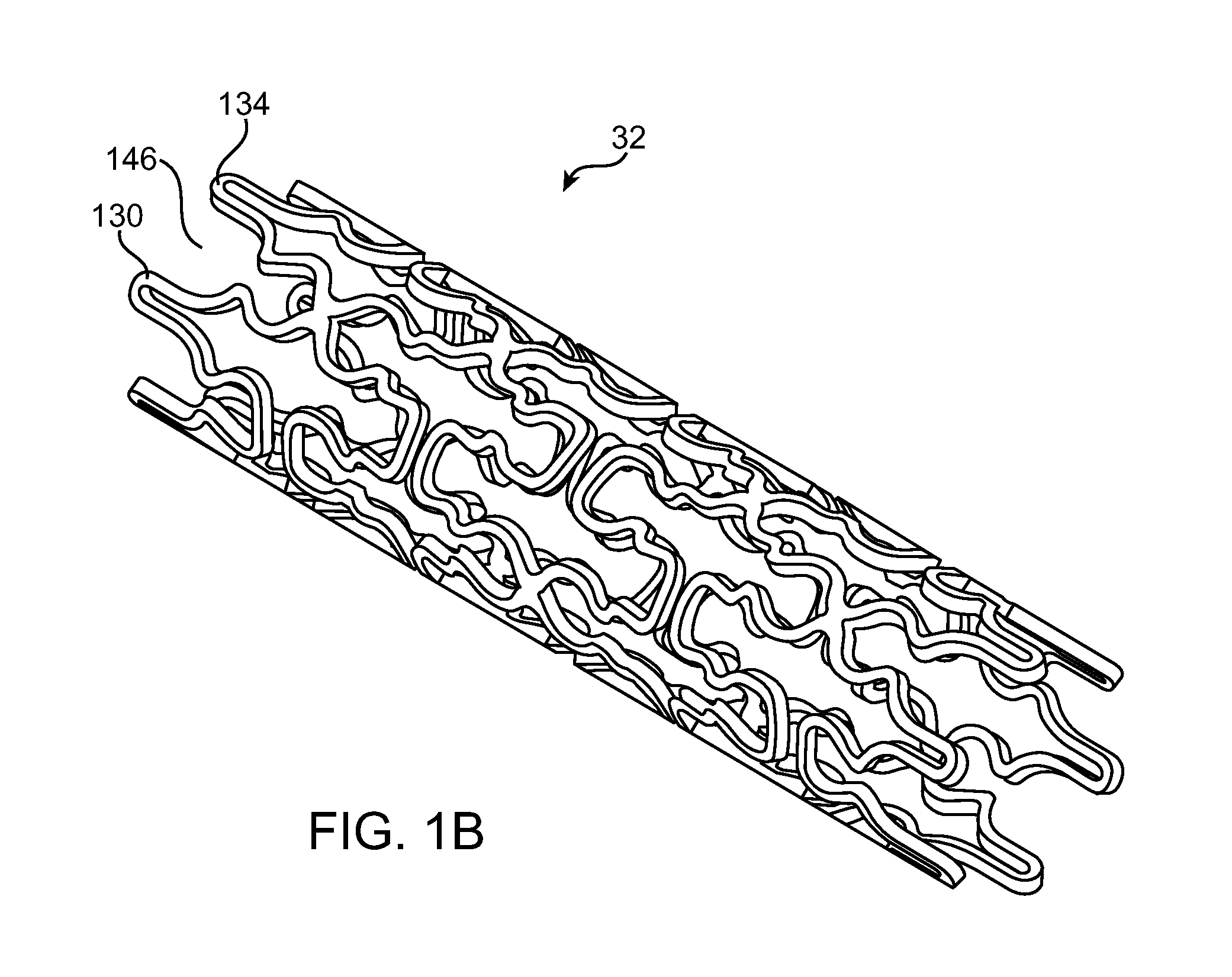Use of Plasma in Formation of Biodegradable Stent Coating
a stent coating and biodegradable technology, applied in the field of medical devices and methods, can solve the problems of affecting the health of subjects, affecting the re-form, and retaining the drug, and causing the matrix to become unusable and potentially harmful to the surrounding tissue and the subject's health
- Summary
- Abstract
- Description
- Claims
- Application Information
AI Technical Summary
Benefits of technology
Problems solved by technology
Method used
Image
Examples
example 1
[0063]Cobalt-chromium alloy stents were loaded onto a mandrel and placed into a holding fixture within a Plasma Science PS0500 plasma chamber. A vacuum was drawn inside the chamber and surface cleaning of the stents was performed by plasma treating the stents with oxygen. Next, allyl amine was plasma polymerized onto the stent surface followed by quenching and purging in argon gas. The stents were removed from the plasma chamber and a therapeutic agent, a matrix of Biolimus A9 and polylactide (PLA) in a solvent (acetone) was then sprayed on the plasma polymerized stents. After spraying, the stents were transferred to a vacuum chamber to evaporate the solvent. The therapeutic agent coating was then evaluated by a series of mechanical tests such as scratch testing, followed by visual inspection. Test results demonstrated that the therapeutic agent adhered to the stent and coating integrity was comparable to control stents having a Biolimus A9 / PLA matrix deposited over a parylene prime...
example 2
[0064]Cobalt-chromium stents were cleaned similarly as above with oxygen. The flow rate for the gas was 350 sccm, and the power was 450 Watts for 5 minutes. Allyl amine or acrylic acid was then plasma polymerized onto the stent surface using a flow rate of 7 ml / hour, at 60% to 80% power (300-400 Watts) for two minutes, followed by quenching and purging under three, one-minute argon gas purges. Biolimus A9 / PLA was then sprayed onto the plasma polymer coating as previously described. The coated stents were then terminally sterilized by irradiation with a minimum of 25 kGy. Coated stents were also placed under accelerated aging conditions (approximately 40° C. for ten days) and then crimped onto delivery catheters for deployment. Drug elution testing demonstrated similar elution rates for both the plasma polymerized stents as well as the control samples which had Biolimus A9 / PLA deposited over a parylene primer layer deposited using CVD. Coating integrity for the plasma polymerized ste...
PUM
| Property | Measurement | Unit |
|---|---|---|
| thickness | aaaaa | aaaaa |
| pressure | aaaaa | aaaaa |
| pressure | aaaaa | aaaaa |
Abstract
Description
Claims
Application Information
 Login to View More
Login to View More - R&D
- Intellectual Property
- Life Sciences
- Materials
- Tech Scout
- Unparalleled Data Quality
- Higher Quality Content
- 60% Fewer Hallucinations
Browse by: Latest US Patents, China's latest patents, Technical Efficacy Thesaurus, Application Domain, Technology Topic, Popular Technical Reports.
© 2025 PatSnap. All rights reserved.Legal|Privacy policy|Modern Slavery Act Transparency Statement|Sitemap|About US| Contact US: help@patsnap.com



